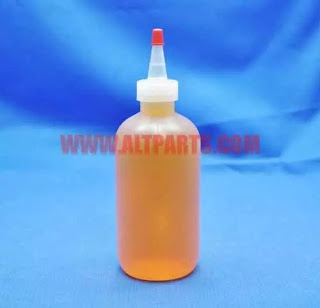Control retrofit is essential to increase the efficiency of production by improving system availability and communication. This helps to update old machines with new and latest technologies rather than changing the whole machine.
There are many such kinds of machines that use control retrofit to terminate issues and increase efficiency. Whenever any issues come in the retrofit, there are spare parts available that can help to rerun the retrofit. Various companies provide spare parts, but the best are Fanuc spare parts and Fanuc CNC parts for CNC machines. The parts of the company are compatible with the machine.
Retrofitting mainly describes the measures that are necessary for any manufacturing industry. The main advantage of control retrofit is that it lowers the cost of maintenance. It helps to run old machines with new and latest technology.
Retrofit benefits every industry in one way or the other. Let us hear more about its benefits and help:
How Does it Help?
Retrofitting is when you replace the CNC, servo, and spindle systems on machines that are overall in good condition to extend their useful life.
Retrofit usually updates the CNC, the spindle motor and drives, the servo motors and drives, and a portion of the associated wiring and related electromechanical components. Presuming that the machine is in good working condition, a retrofit is the bottom price option used to augment a legacy machine tool's performance. Most of the retrofitting is done at the machine's site, which helps avoid expensive machine rigging and transportation costs while minimizing downtime. It also helps avoid any malfunction due to transportation.
Benefits of Control Retrofit
- Increase Machine and Process Reliability
Many industries still use old methods. However, they have limited communication capabilities. They take time to interact with the processes.
Retrofit is a modernized system. It helps to centralize things by storing division wise data. By doing so, the work becomes easy to manage. Everything remains in one place, and it becomes easy to maintain and handle. You can quickly access all the real-time information remotely. Using remote monitoring in different ways can help you with better security. With modern controllers, you can always keep an eye on your systems and processes.
- Reduce Costs
Control retrofits reduce the cost of buying new machines when old machines stop working. It revitalizes the new updated parts to fit in the old or outdated parts, saving the cost of having new machines.
- Reduce Unplanned Downtime
When machines stopped working in the old times, the time and labor required to repair them increased. With control retrofit, it is not a problem anymore. It has a higher MTBF (the mean time between failures) than other controllers.
As retrofit only needs an engineer to run the source code, the process becomes faster. Besides, modern technology makes it easy to debug and troubleshoot problems.
- Improve Safety
With modern controllers, retrofit provides all the safety in the safety programming of PLC (Programmable Logic Controller). Using them reduces the usage of external hardware like relays to troubleshoot the problems.
The old relays cannot reach everywhere while troubleshooting. The safety relays do not have any portal to view, debug or troubleshoot the device. Moreover, dual-channel safety circuits need to complete connections on each channel within a very small time frame. Without a detailed guide, the chances of fault in the circuit are high. Thus, modern controllers come with detailed troubleshooting guides.
However, it is advisable to conduct Safety Risk Assessment while upgrading the controls. It ensures that the circuit has achieved the right SIL (Safety Integrity Level) to migrate risks.
- Open Architecture
Control Retrofits provides all the documented source code to control hardware and software. It uses ISA standards to organize and set up PLC programs for ease of use and diagnostics.
Other Uses of Control Retrofits:
- Saves capital expenditure
- Optimizes components of the existing plants
- Adapts new plants for new or changed products
- Easy availability of spare parts
- Increase reliability
- Environmental engineering for new projects
End Words
Control retrofit helps to update the old machines with new and latest technologies. It benefits the manufacturing industries in various ways. Retrofit is compatible with the machines to help them work efficiently with new technologies. The Fanuc spare parts and Fanuc CNC parts are most compatible to use for retrofitting.
Source: https://altpartsinc.wixsite.com/altpartsinc/single-post/machine-upkeep-the-retrofit-solution


